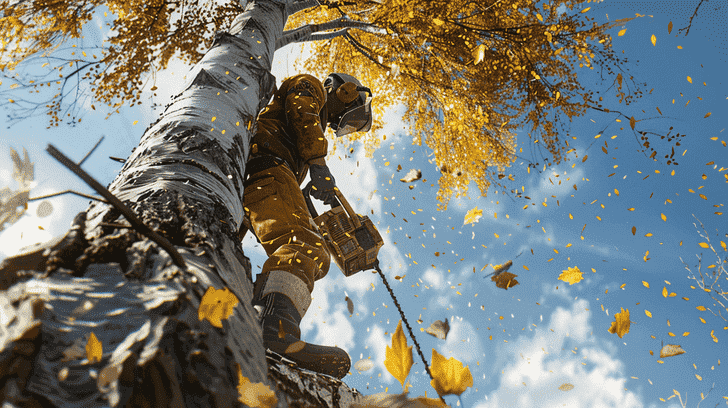Tree Trimming Facts – Pruning Trees and Shrubs
When it comes to tree trimming, proper pruning is crucial for health and aesthetics. Trim to maintain tree health and remove dead branches for new growth. Shape trees for better appearance and improved light penetration.
Best times to trim are late winter or early spring before new growth. Avoid heavy pruning that can stress trees; use the right tools like pruning shears and loppers.
Regular trimming prevents decay and aids in pest prevention, promoting healthy growth.
Remember, understanding the importance of tree trimming techniques is vital for healthy, visually appealing trees.
Learn more about tree trimming practices to guarantee excellent growth and longevity.
Importance of Tree Trimming and Pruning
Tree pruning plays a crucial role in maintaining the health and aesthetics of your trees. Proper trimming and pruning are essential aspects of tree maintenance that contribute to the overall well-being of your trees.
By regularly pruning trees, you can remove dead or diseased branches, promoting new growth and preventing the spread of diseases.
Trimming and pruning also help to shape the tree, enhancing its appearance and ensuring it fits well within its surroundings.
One of the key benefits of tree trimming is improving light penetration. Removing excess branches allows sunlight to reach the inner parts of the tree, promoting photosynthesis and overall tree health.
Adequate light penetration also benefits the surrounding plants and grass by providing them with the necessary sunlight for their growth.
Best Times for Tree Trimming
For optimal tree health and growth, timing plays a crucial role when it comes to trimming. The best time to prune your trees is during late winter or early spring before new growth begins.
This timing allows the tree to focus its energy on spring growth and healing from the pruning wounds. It’s essential to remove any diseased or damaged branches promptly to prevent the spread of tree diseases.
Pruning during the dormant season helps promote new growth in the spring, giving your trees a fresh start for the growing season.
Trimming during the late fall or summer months isn’t recommended as it can stress the tree and make it more susceptible to diseases and pests.
Avoid trimming during periods of extreme weather conditions, such as heatwaves or severe cold.
By following the proper timing for tree trimming, you can safeguard the health and vitality of your trees while minimizing the risk of introducing problems that could harm them.
Common Mistakes to Avoid
To guarantee successful tree trimming, it’s important to avoid common mistakes that can harm the health and appearance of your trees.
When it comes to pruning, one common mistake is heavy pruning. While it might seem like a good idea to remove a significant portion of the tree’s branches, heavy pruning can stress the tree and lead to stunted growth or even cause irreversible damage.
Another mistake to watch out for is neglecting to remove dead or damaged branches. These branches not only affect the overall aesthetics of the tree but can also be safety hazards.
Additionally, failing to trim lower branches properly can impede pedestrian or vehicle traffic and hinder the tree’s growth pattern.
It’s essential to remember that proper pruning techniques are important for the overall health and longevity of your trees. By avoiding these common mistakes and adhering to best practices, you can ensure your trees remain healthy, vibrant, and visually appealing.
Benefits of Regular Trimming
Regular trimming of your trees offers a multitude of benefits that contribute to their overall health and appearance.
One of the primary advantages of regular pruning is the promotion of healthy growth.
By trimming away dead or diseased branches, you enable the tree to focus its energy on new growth, leading to more robust branches.
Additionally, regular trimming helps prevent decay by removing areas that are prone to rot, thereby prolonging the lifespan of your trees.
Furthermore, regular trimming can also aid in pest prevention. Insects and pests often seek refuge in overgrown or damaged branches, which can lead to infestations that harm the tree.
By keeping your trees well-maintained through regular pruning, you reduce the risk of pest infestations and protect the overall health of your trees.
Tools Needed for Tree Trimming
When it comes to tree trimming, having the right tools at your disposal is essential for ensuring a successful and efficient process.
Pruning is a delicate task that requires precision, and the tools you use play an important role in achieving desirable results.
One of the primary tools needed for tree trimming is a good pair of pruning shears. These shears are ideal for cutting small branches, dead branches, and foliage with accuracy.
For thicker branches, a pruning saw is essential. This tool allows you to cut through larger branches with ease.
Loppers come in handy for trimming thicker branches that are out of reach of pruning shears.
When dealing with lateral branches, a pruning knife can be useful for more intricate cuts.
Additionally, a sturdy pair of gloves is essential to protect your hands while handling sharp tools and branches.
Having these essential tools for tree trimming will make the process smoother and help maintain the health and appearance of your trees.
Hiring a Professional Vs. DIY
Considering the complexity and risk involved in tree pruning, weighing the decision between hiring a professional and opting for a DIY approach is essential for ensuring the safety and health of your trees.
When it comes to pruning your trees or shrubs, hiring a professional arborist can offer numerous benefits.
Professionals have the expertise to identify the specific needs of each tree or shrub, ensuring that the correct pruning techniques are applied to enhance their growth and overall health.
They can also safely remove dead or diseased branches, promoting new growth and preventing potential hazards.
While a do-it-yourself approach may seem cost-effective, it can be risky, especially when dealing with larger trees or complex pruning tasks. Incorrect pruning techniques can lead to damage, disease, and even the decline of the tree’s health. Professionals have the proper tools, knowledge, and experience to prune your trees effectively, minimizing the risk of accidents and ensuring the best results for your landscape.
Ultimately, investing in a professional for pruning your trees or shrubs can save you time, effort, and potentially costly mistakes in the long run.
Conclusion
To sum up, tree trimming plays a vital role in maintaining the health and appearance of your trees. By trimming them regularly, you can prevent potential hazards, promote growth, and enhance the overall aesthetics of your landscape.
So, next time you look at your trees, ask yourself: are they due for a trim? Remember, taking care of your trees now can save you time and money in the long run.
Stay informed and keep those trees looking their best!

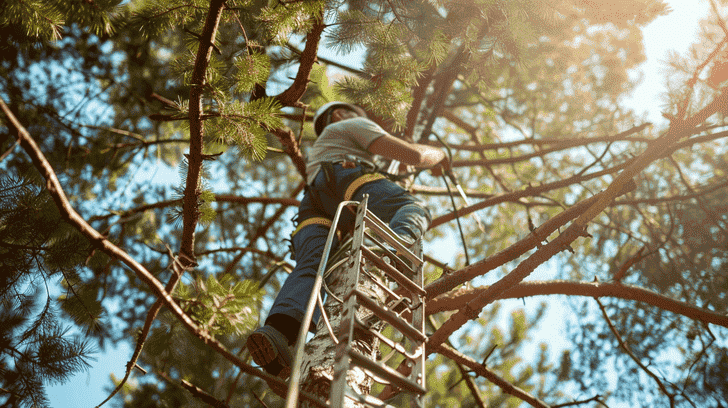
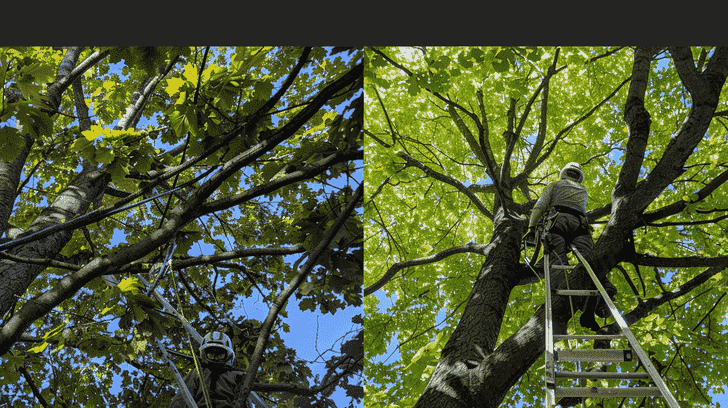
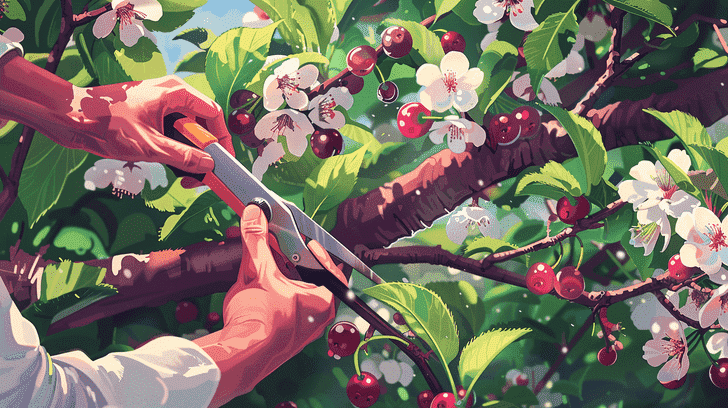
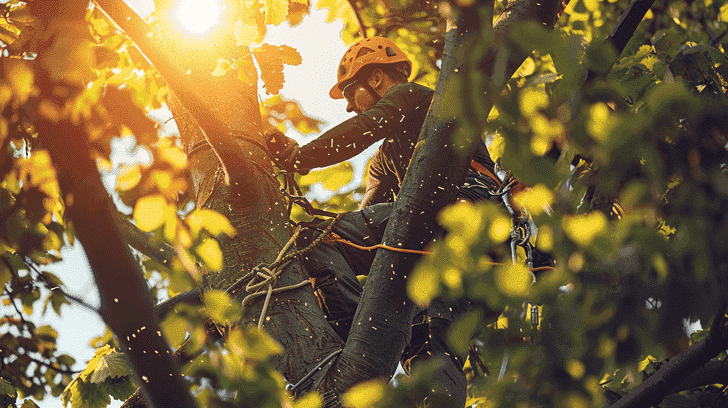
![How Much Does Tree Trimming Cost? [+Calculator]](https://abbeytreesurgeons.co.uk/wp-content/uploads/2024/03/how-much-does-tree-trimming-cost.png)

